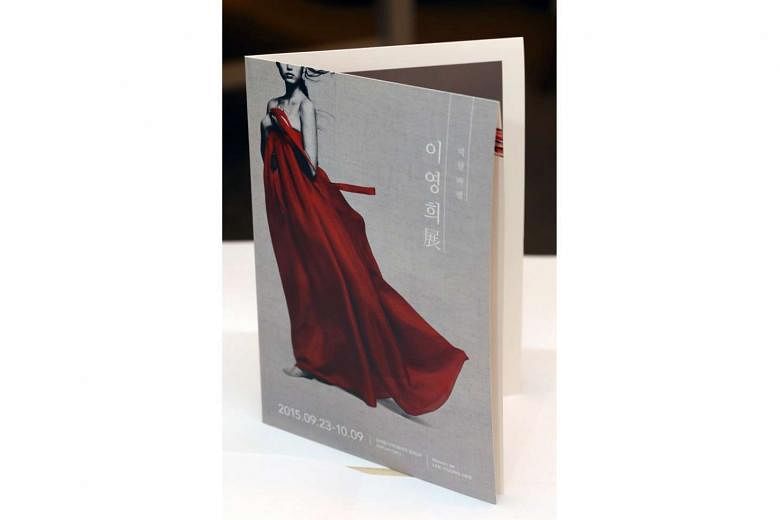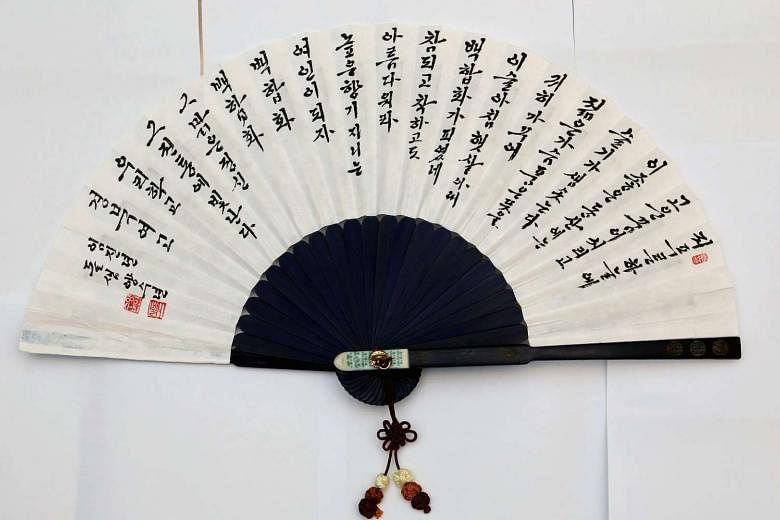Fashion designer Lee Young Hee may not be widely recognised in Singapore, but she is hot property in Paris, New York and her native South Korea because of her modern hanbok (traditional Korean dress) designs.
The youthful-looking 79-year-old was in town last weekend for SGKstar, a three-day festival showcasing the best of Korean beauty, culture and the arts at Marina Bay Sands Expo and Convention Centre. Itcelebrated 40 years of diplomatic relations between Singapore and South Korea.
As this year also marks the 40th anniversary of her career as a hanbok designer, Lee was "very excited to come and take part". A firm believer that one can wear the hanbok every day, she points to her outfit of a black blouse and white skirt as an example.
"It is the lines and the curves of the silhouette and the silk material that make this a hanbok," she explains. She has other hanbok designs in the style of short dresses and estimates that traditional hanboks make up half her designs.

A woman's hanbok typically consists of the jeogori, which is like a cropped jacket with long sleeves, and the chima, a long skirt-like fabric that is wrapped around the bust and falls to the ground. A petticoat, called the sokchima, is worn underneath.
For Lee's first international show in Paris in 1993, titled Clothes Of Wind, she sent models down the runway in lush-coloured chima without the jeogori, so the models' arms, shoulders and cleavage were exposed. While the crowds in Paris loved it, her sexy hanboks caused a stir back home.
Speaking through a translator, Lee recalls: "Everyone was talking about it. They said, 'This is not our culture; this is not our clothes.'"
The late Dr Seok Ju Seon, a well-known scholar of traditional Korean clothing, quelled the commotion. Quoting Dr Seok, Lee says: "As time passes, people change. As people change, clothes should change too."
Lee, who is married to a retired government worker with three adult children, is admired by Italian fashion designers Miuccia Prada and Giorgio Armani for her beautiful hanboks. She counts South Korea's first ladies and current president Park Geun Hye among her clients.
Lee has a boutique in Shinsa-Dong in the Gangnam district of Seoul, and there is a Lee Young Hee museum in New York which has a collection of her hanboks and other exhibits showcasing Korean culture.
Prices for her silk hanboks start from $1,000 and go upwards of $3,000, depending on the pattern and embroidery on the fabric.
While it was common during Lee's childhood years to wear a hanbok, the style of dress gradually fell out of favour during the mid1900s, giving way to Westernised clothing. Most South Koreans now wear the hanbok only during important occasions such as weddings and first birthdays.
Of her sexy Clothes Of Wind collection, Lee says: "If we had the same Korean tradition, no one would like the hanbok. But my designs are something that everyone would be able to wear, like a dress or an evening gown."
ON HER BAG
I designed it in collaboration with Korean handbag company Simone. It is one of a kind and I like it not only because I designed it, but also for its shape and size for travelling. I've had it since September.







